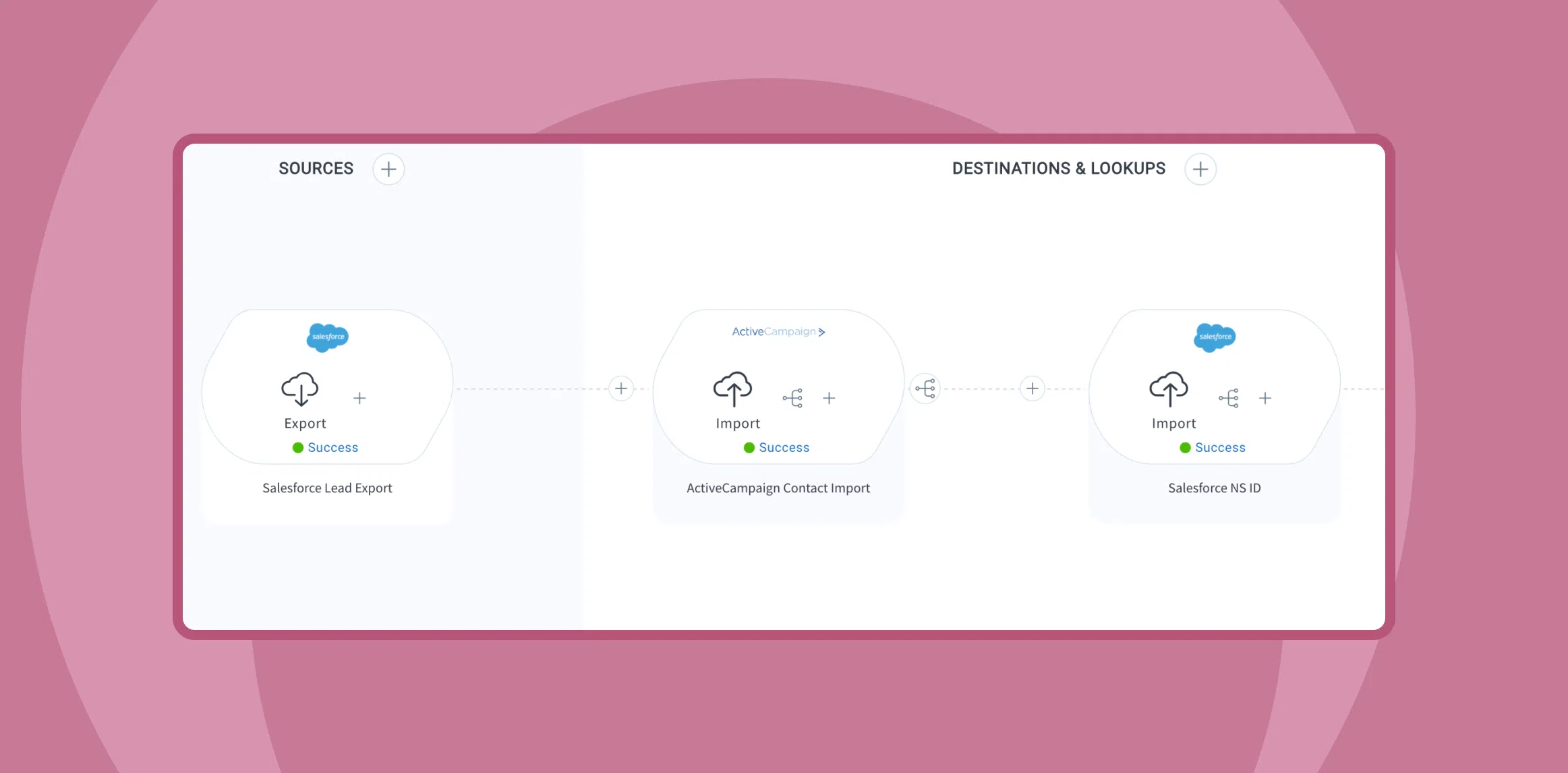Published Jul 31, 2024
Connect and conquer: Aligning sales and marketing teams with automation

- Disparate sales and marketing tools lead to errors, inconsistencies, and poor hand offs.
- Integrate your tech stack to align your teams and automate your processes.
- Streamline lead enrichment, syncing, and engagement with iPaaS.
Effective collaboration between sales and marketing is critical for a well-functioning lead funnel. Unfortunately, misalignment between teams is more common.
The issue starts with disparate systems. When lead data is siloed across applications, manual steps are needed to get information to the correct teams. As a result, you face slow hand offs, missing data, errors, and leads stuck in the funnel. This prevents sales teams from effectively following up on leads, and 77% of leads are not responded to by sales at all. These processes ultimately leave your teams frustrated with one another.
The good news is there’s a way to get your teams on the same page and ensure a smoother, more efficient lead funnel. The key is to integrate your sales and marketing tech stack and automate your lead management processes. Let’s explore how lead lifecycle management automation can help you foster synergy between your teams, and more importantly, close more deals.
Unpacking sales and marketing misalignment
Manual lead management processes cause many points of contention for teams. With leads coming in from a variety of sources, such as website forms, landing pages, and social media platforms, they often have incomplete information. Enriching each of these leads manually is time-consuming and error-prone.
Issues that start with poorly enriched data worsen when it comes to lead syncing. Ensuring accurate lead data is updated in both your sales and marketing tools requires tedious manual data entry. And, this data grows stale quickly, leaving you without a source of truth. These problems often cause sales teams to spend their time researching leads to fill in missing and incorrect information, rather than selling. In fact, reps spend 9.3% of their time researching prospects.
All of these issues make it difficult to follow up with your hot leads quickly. Segmenting your leads can exacerbate this problem, as manually routing your leads to the appropriate destination, whether it’s sales teams or nurture cadences, causes delays. These challenges combined leave you with a process that’s slow, inefficient, and lacks scalability.
Aligning your teams with automation
Automation can help you solve these issues and foster more collaboration amongst your teams. With lead data flowing smoothly between systems, your teams can focus on working together to build better experiences and close more deals, rather than manual lead management tasks. This also allows your marketing and sales teams to access the same lead data, breaking down silos between teams and ensuring alignment.
Here are a few examples of how you can automate your lead lifecycle management processes:
- Lead capture & enrichment: Automatically enrich leads before they reach your customer resource management (CRM) system by connecting it with your data enrichment platform. This enables you to add details like job title, company, and company size before the leads are passed to your sales teams.
- Lead syncing: By integrating your key systems, you can automatically update lead data across applications. When a record changes in one system, it can be updated in real-time or time-based batches. This enables you to ensure that data is the same across your marketing automation platform (MAP), CRM, and sales engagement solution.
- Lead engagement: With integration, you can automatically segment your leads, making sure your hottest leads get into the hands of your selling teams and cooler leads head into nurture cadences. You can also send your reps emails about hot leads and mark high intent in their alerts, so they never miss a lead.
Streamlining lead lifecycle management with iPaaS
Once you’ve determined your automation strategy, the next step is to choose an integration solution. There are a variety of solutions, but not all of them are prepared to give you the scalability you need to continue growing your business.
Celigo’s advanced iPaaS (Integration Platform as a Service) solution provides you with the tools you need to integrate all your sales and marketing tools on a single platform. With a user-friendly interface built with non-technical users in mind, your business teams can build, manage, and monitor their own integrations for greater flexibility and adaptability.
Discover how an iPaaS can transform your lead funnel with our ebook, “Empowering SaaS businesses through integration: A playbook.”




